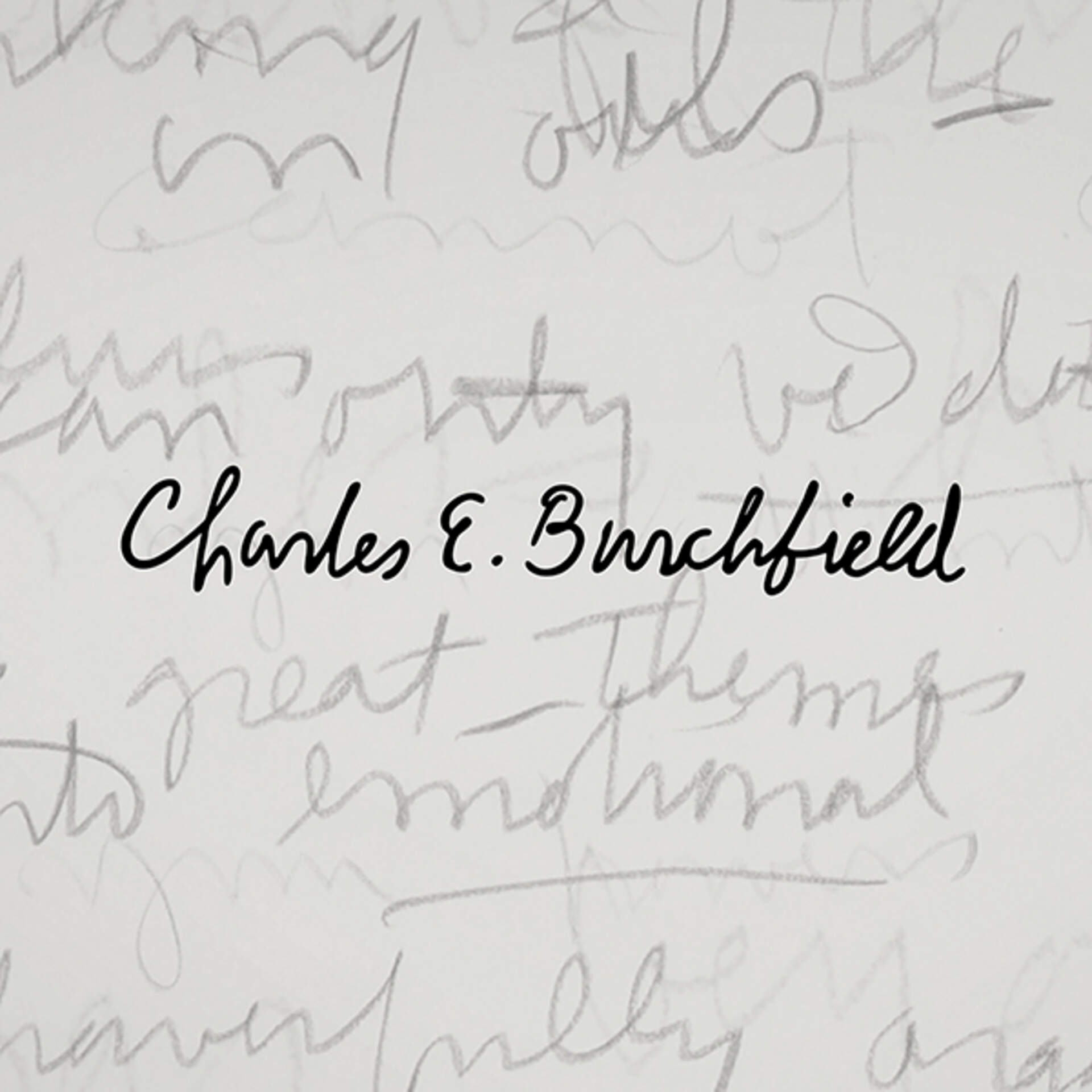
RICHARD KEGLER / P22 TYPE FOUNDRY: CHARLES E. BURCHFIELD (THE FONT PROJECT)
Presented thanks to the support of an anonymous donor
Past
Feb 13, 2015 - Jan 10, 2016
In 2013, Richard Kegler, co-founder and lead designer of Buffalo based P22 Type Foundry, was commissioned by the Burchfield Penney to create the Charles E. Burchfield font to honor the artist. This exhibition is a celebration of the acquisition of the font into The Center’s collection.
P22 type foundry was formed as a result of making a single font based on the handwriting of Marcel Duchamp. The Duchamp font was created for Richard Kegler’s Masters thesis in 1994. The only descriptive text included with the floppy disc containing the font was:
The original intention of this font was to serve as an element of a thesis project which based a series of computer works on the enigmatic art of Marcel Duchamp. All of the letter characters were derived from facsimiles of Duchamp’s notes on the "Large Glass" and "Readymades".
Response was so favorable that it was made available as a commercial font (Duchamp Version 1.1). Twenty years after the Duchamp font was made, P22 had released over 1,000 fonts mostly based on various eras of art and design history. The Burchfield font follows many of the same self-imposed limitations given to the making of the Duchamp font. Like the Duchamp font, The Burchfield font is not available for sale. Sorry!
The exhibition includes ephemera from the P22 Archive at The Center and various fonts it has developed over the past 20 years. Highlights include packaging and related material for the Duchamp font (now retired) as well as the Miro, Vincent (van Gogh) and Arts and Crafts fonts. The installation also includes archival objects from the Charles E. Burchfield Archives at the Burchfield Penney that were used in the development and design process. A limited edition specimen book of the type will be available in the Museum Store.
Works by the following P22 staff and collaborators who are part of this exhibition include: Jimy Chambers, Carima El-Behairy, James Grieshaber, Brian Grunert, Colin Kahn, Alan Kegler, Denis Kegler, Kevin Kegler, Thomas Kegler, KC Kratt, Maria Pabico LaRotonda, David Lyttleton, Rod McKuen, Miranda Roth, Jim Rimmer, Pete Reiling, and Michael Want.
From the age of 17 until the end of his life, Charles E. Burchfield (1893-1967) hand wrote journals that chronicled his artistic and intellectual development. Thanks to generous gifts from the Charles E. Burchfield Foundation and other donors, this collection of writing—more than 10,000 original pages—is housed in the Burchfield Penney's Charles E. Burchfield Archives.
Over the past 40 years, Charles Burchfield’s handwriting has been transcribed by countless staff, interns, and volunteers. This labor of love has made the relationship with Burchfield's handwriting an intimate one for those charged with the task of transcription. Discussions over what a line might say, debates on whether a letter is an “o” or an “a” fill the Burchfield Archives to this day. Those lucky enough to transcribe the artist's words are among a very few to have read these passages.
To experience the changes in the author's writing over the years, to learn to read his handwriting is a fine way to better know the man. It is a privilege that none take lightly.
In 1993, SUNY Press published Charles Burchfield's Journals: The Poetry of Place. In the editor's introduction, J. Benjamin Townsend stated: "Probably no one in the history of Western Art has left a more sustained, detailed history of his daily life and artistic development than the American watercolorist, Charles Burchfield."
On April 7, 1938 Burchfield wrote: "Reflecting on the impermanence of my art, I envied that of the composers, or writers, whose art never can deteriorate but is always good as long as the human race survives."
Burchfield’s paintings are indeed fragile. Without proper care they can be lost to the effects of light and time, but his words, written in his own hand, can be lifted from the page to help us understand the artist, his work and the world he lived in—and to inspire us today.
The creation the Charles Burchfield Font is an homage to the artist and a memorial to his passion for writing. We are grateful to Richard Kegler and P22 for sharing our enthusiasm and to an anonymous donor who made our desire to see this project to fruition possible.
Kathleen McMorrow Heyworth and Tullis Johnson
Burchfield Penney Art Center